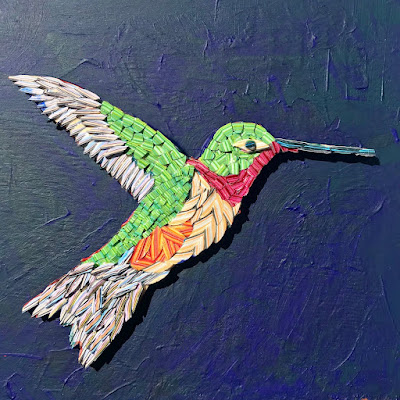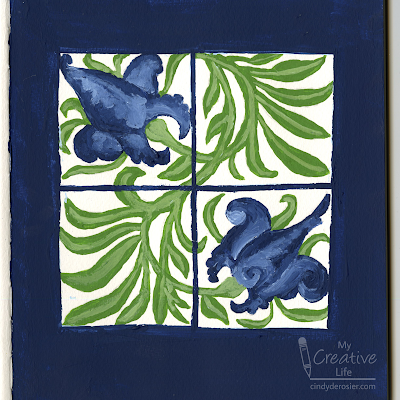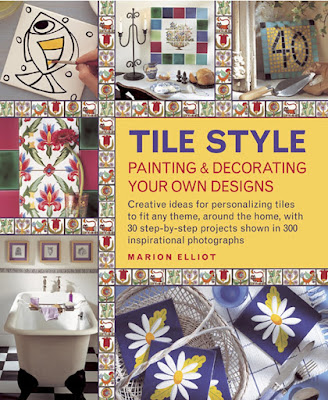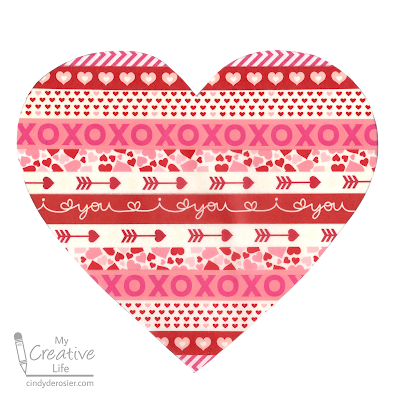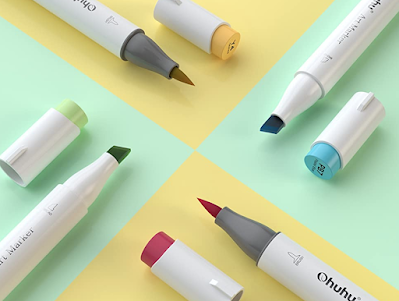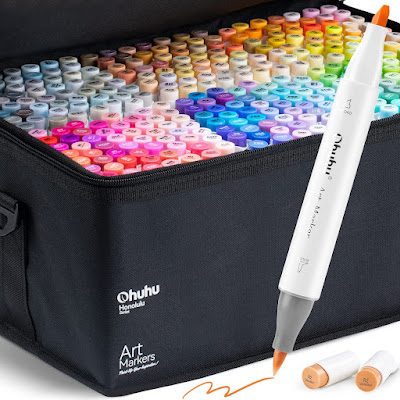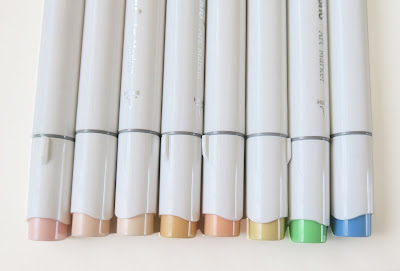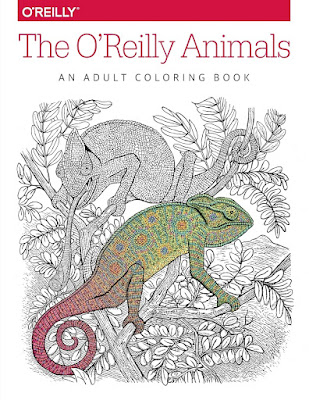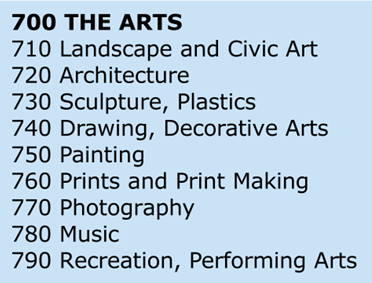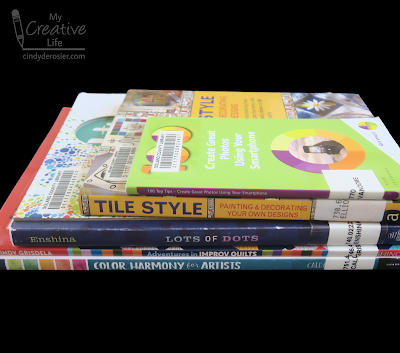Before I explain how I made it, let me start with why I made it. One of my creative resolutions for 2023 is to play Library Roulette with books from the 700 section, then using them to inspire a craft project. To understand what I mean by Library Roulette, go way back to 2012 when
I played it for the first time. To understand what I mean by the 700 section, look at this chart of the Dewey Decimal categories within the 700's.
I used five randomly generated numbers from 700-799 to select five library books. My numbers were 770, 738, 740, 746, and 751. As you can see, 770 is Photography. 738 is Sculptures and Plastics. 740 and 746 are Drawing and Decorative Arts. 751 is Painting.
I chose to work with
Lots of Dots by Ana Enshina (affiliate link here and throughout the post) first.
This unique book shows how easy it is to create beautiful works of art using nothing but dots. The first few pages explain the technique, then the rest of the 135-page book is filled with dotted artwork and the templates to make them yourself. I love everything about this book, but it seems like a risky choice for a library. The perforated templates are designed to be torn out; fortunately, no one has done so. (Thank you, fellow library patrons!)
Since I obviously wasn't going to tear out a page from a library book (I can't even tear out pages from books I own), I used the frog from the "Easy" section of the book as a guideline for drawing my own on a piece of scratch paper. I folded the paper in half and cut it out to make a symmetric pattern, which I traced lightly onto
Bristol Vellum.
I selected colors from the gorgeous
Ohuhu Kaala 60-Marker Landscape Set and made some swatches on my paper. Because I was inspired by the leopard frog, I used the yellow and orange to add dots down the frog's back to mimic its actual coloration.
I used my darkest brown to make the leopard frog's namesake spots. I used the same brown on the frog's joints, then used it and another brown on the fingers and toes.
I outlined each brown spot with tiny yellow dots, then started filling in the rest of the frog. I kept it sort of symmetric, without being too precise about it.
Finally, I erased the pencil guidelines and cut out the frog using microtip scissors. It looked striking against a piece of green paper...
... but a bit too much like a 'specimen' in my opinion. By giving it a gentle bend along the midline, then adding bends to the joints, I had a much more lifelike leopard frog.
This was a really fun project and
Lots of Dots was a great way to start off this edition of Library Roulette. I can't wait for the next book and craft!








